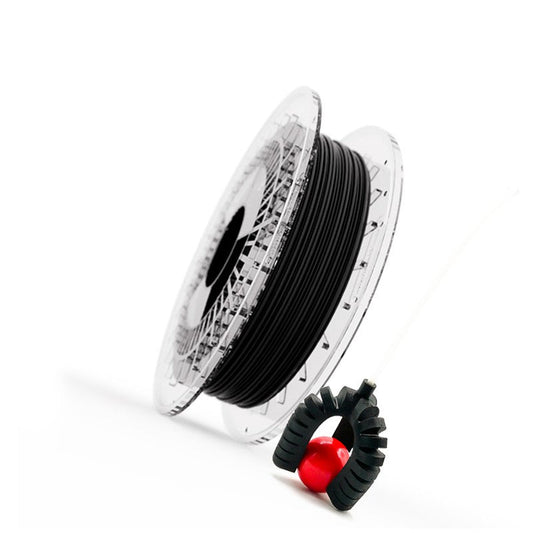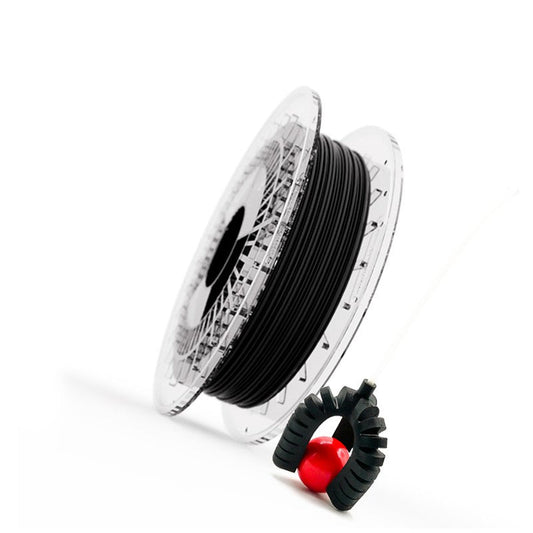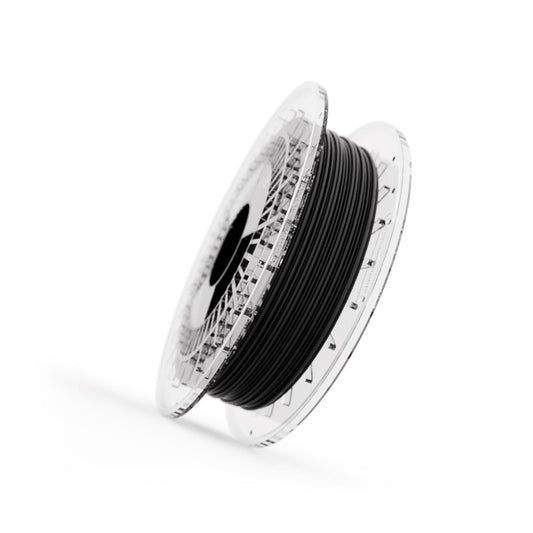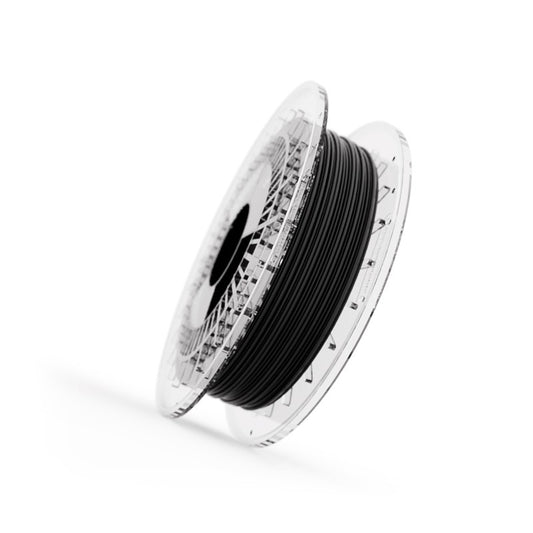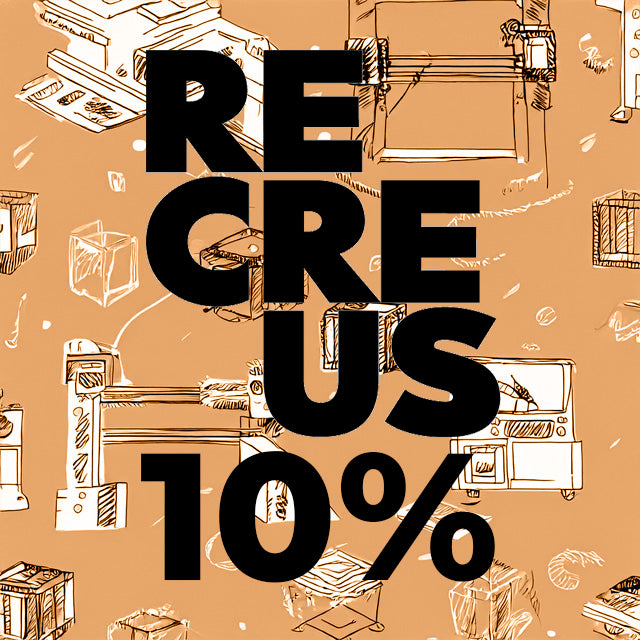Moisture in Filaments?
Understanding Filament Hygroscopicity: What You Need to Know
Did you know that all plastic filaments have a property that can affect the quality of your 3D prints? 'Hygroscopicity', apart from being a complex word, is a key characteristic that should not be ignored and can ruin your 3D prints. Discover how the hygroscopicity of plastics can affect your projects and learn how to protect your filaments to achieve perfect prints. Don't miss out!

Filament detail without and with humidity respectively.
What is 'hygroscopicity'?
Hygroscopicity is the ability of a material to absorb water from the environment. It is similar to how a sponge can capture and retain water. But this property is not just limited to sponges or other items like kitchen towels, it is a common phenomenon in a wide variety of materials, including most plastics. This can occur when plastic materials are exposed to air and humidity, which can affect their physical and mechanical properties.
"It is the ability of a material to absorb water from the environment. It is similar to a sponge, which can capture and retain water."

Dry filament detail on the left and humidity on the right.
Why do plastics absorb moisture?
The answer lies in the chemical structure of plastics. Plastics are made of long chains of molecules called polymers. Some of these polymers have specific sites in their structure that are attracted to water molecules. Think of it like a magnet for water. These sites attract water from the environment and retain it, resulting in the absorption of moisture by the plastic. It is similar to how table salt exposed to the air can become lumpy due to the moisture it can absorb from the environment.
Why is it important to consider hygroscopicity in 3D printing?
It is important to consider this concept when it comes to 3D printing because it affects the majority of materials used for printing.
Some common hygroscopic materials in 3D printing include the following filaments:
- PLA (polylactic acid)
- Nylon
- PVA (polyvinyl alcohol)
- TPU (poliuretano termoplástico)
- PETG (glycol polyester)
When a hygroscopic material like TPU absorbs moisture during its use or storage, it can affect its behavior during 3D printing. Imagine you're baking a cake and accidentally add too much water to the mix. The cake won't cook as you expect, right? The same thing can happen with 3D printing filaments. Moisture can cause the filament to swell, bubble, or even break during printing, which can affect the quality of the printed object.

Some hygroscopic filaments or materials in 3D printing.
How to handle hygroscopic filaments for 3D printing?
The key is in storage. 3D printing filaments should be stored in a dry place and, if possible, in an airtight container to prevent them from absorbing moisture. In addition, the use of dehumidifiers is also convenient. Some people even use desiccant packets, those small bags that come in the box of your new shoes, to help keep moisture at bay.
Before printing, hygroscopic filaments such as TPU may need to be dried to ensure the best print quality.

Recreus silica gel desiccant bags.
How to dry TPU filaments for 3D printing?
Drying TPU filaments is crucial to achieve the best possible printing quality. This is where science meets practice. It is recommended to dry TPU at a temperature of 40-45°C for at least 5 hours before each print. Right after taking the filament out of the bag, it starts absorbing moisture, so proper drying is essential to prevent issues during printing.

Right after the filament is removed from the bag, it starts to absorb moisture, so good drying is essential to prevent problems during printing.
How to avoid hygroscopicity in 3D printing filaments?
To prevent 3d printing filaments from absorbing moisture, the following tips should be followed:
1. Proper storage: It is important to store the filaments in a cool, dry place, preferably in a sealed bag with a silica packet to absorb moisture.
2. Drying before printing: If the filaments are already hygroscopic, we can dry them before printing. For this, we can use a conventional oven or a drying machine specifically for 3D filaments.
3. Protection during printing: During printing, it is important to protect the filament from ambient humidity by using a box or a protective cover.
4. Use of dehumidifiers: To maintain a dry environment in the printing area, we can use an air dehumidifier.
5. Moisture resistant filaments: When purchasing filaments, we can opt for those that are moisture resistant, such as PETG or Nylon filaments.
If the filament has still absorbed moisture, there are various tools and machines for drying 3D printing filaments, such as drying boxes or filament drying machines. These machines work through the application of heat in a controlled environment, removing moisture from the filament and preventing hygroscopicity.
In conclusion, being aware of this phenomenon and to prevent it from occurring in 3D printing filaments, it is important to store them properly, pre-dry them if necessary, protect them during printing, use moisture resistant filaments and use filament drying tools and machines if necessary.





